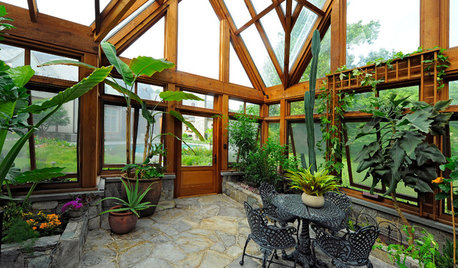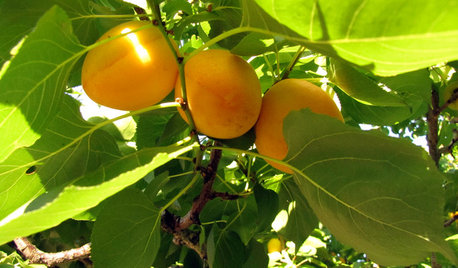Growing Pecan Trees
kathy_fl_panhandle
22 years ago
Related Stories

EDIBLE GARDENSHow to Grow 10 Favorite Fruit Trees at Home
Plant a mini orchard in fall, winter or early spring to enjoy fresh-off-the-tree fruit the following year
Full Story
GARDENING GUIDESGrow Your Own Privacy: How to Screen With Plants and Trees
Use living walls to lower your home and garden's exposure while boosting natural beauty in your landscape
Full Story
EDIBLE GARDENSHow to Grow Your Own Luscious Cherries
Nope, they’re not the easiest fruit to grow. But with spectacular blossoms and pies as possibilities, cherries are sure worth a try
Full Story
FRUIT TREESHow to Grow Your Own Persimmons
Sturdy and easy to care for, these trees offer bright fruit through winter — and keeping them in bounds is no sweat
Full Story
EDIBLE GARDENSHow to Grow Your Own European and Asian Pears
Try these trees for their good looks, delicious fruit and wide range of sizes — plus you can espalier them
Full Story
EDIBLE GARDENSGrow Plum Hybrids for Your Favorite Fruit Flavors
Plums are cozying up with apricots, peaches and even cherries — here’s how to grow these hybrids for the best aspects of each
Full Story
FRUIT TREESHow to Grow Your Own Juicy Plums
Easier than other stone fruits and with a variety of colors to choose from, plums are a versatile garden addition
Full Story
EDIBLE GARDENSWhy Grow Quince? For Beauty, Fragrance and Old-Time Flavor
Delightfully perfumed fruit and lovely spring blossoms make this apple and pear cousin worth a spot in the garden
Full Story
EDIBLE GARDENSThe Enticing Garden: How to Grow Bananas
Sweeten your dining table with surprising flavors of banana cultivars while adding tropical flavor to your garden
Full Story
EDIBLE GARDENSHow to Grow Your Own Apricots
Velvety fruit, pretty blossoms and interesting bark make apricot trees a delight — and they’re great for smaller gardens
Full StoryMore Discussions






landspro
lilwiz
Related Professionals
Barrington Hills Landscape Architects & Landscape Designers · Lake Oswego Landscape Architects & Landscape Designers · Wake Forest Landscape Contractors · Concord Landscape Contractors · Bell Gardens Landscape Contractors · College Park Landscape Contractors · Homewood Landscape Contractors · Mahwah Landscape Contractors · Mastic Beach Landscape Contractors · Maywood Landscape Contractors · Natick Landscape Contractors · Nutley Landscape Contractors · Parker Landscape Contractors · Pleasant Prairie Landscape Contractors · Wailuku Landscape Contractorslandspro
lucky_p
SunnyCher
fusion_power
lucky_p
rem1061
fusion_power
rem1061
fusion_power
rem1061
april_sound
pabelote
wgoff
beetlebob
Roy1943
BradleyB
pabelote
athagan
jkemp01
Steven_Lloyd
horticurt
star4447
mrtexas
Danny_Joe
tuscaloosatom
pantherridgejohn
foobydoo
fusion_power
cajundreamer
scottokla
janla_07
scottokla
danswife33
mtraugott
fusion_power
rachaelandstan
vandeepecans
gator_rider2
jus256
fusion_power
lucky_p
Darylzangel_yahoo_com
lucky_p
wgoff
graydog111
kaylawildflower8bflorida
fusion_power
fusion_power